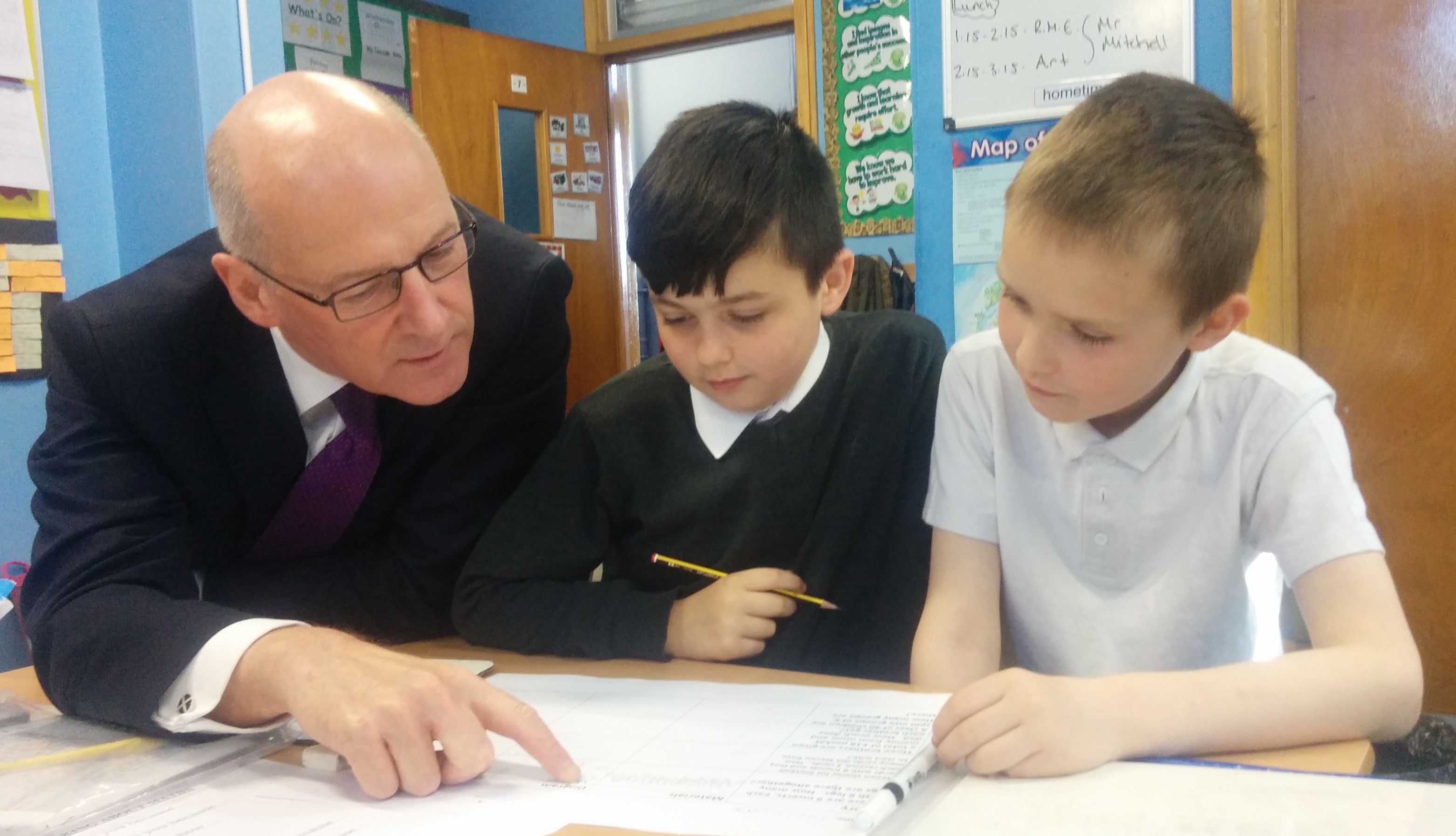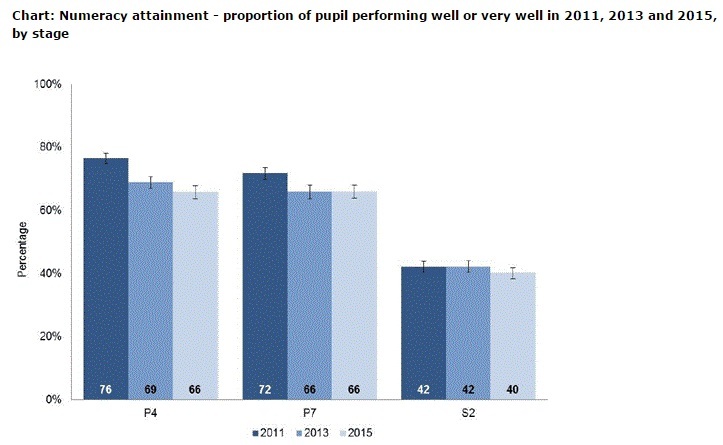The number of Scottish P4 pupils hitting key numeracy performance levels has fallen for the third time in a row.
New figures released in the Scottish Survey of Literacy and Numeracy reveal the proportion of pupils performing well or very well decreased between 2013 and 2015, having done the same between 2011 and 2013.
At P7, performance stabilised after an initial fall while there was another slight dip in S2 levels, although statisticians said the difference was so small it should be regarded as a steady performance.
Just two-thirds of P4 and P7 pupils performed well or very well at numeracy attainment. That number plummeted to only 40% by S2.
Unveiling the figures at Dundee’s Dens Road Primary School this morning, Education Secretary John Swinney said: “Today’s statistics reinforce the need to improve attainment and to close the gap between the performance of young people from different backgrounds in Scotland’s schools.
“We have much to do to ensure our young people are supported to improve their understanding and use of numeracy and our teachers are equipped with the knowledge, skills and confidence to drive up standards in this area.
“We have introduced several measures since numeracy statistics were last published in 2014 as part of our firm commitment to address the attainment gap.
“Chief among the fresh measures has been the introduction this year of a National Improvement Framework, which will see new standardised assessments give detailed information to teachers on every child to show what is working and what needs attention.
“We have increased our investment in the Attainment Scotland Fund to £750 million over the next five years. This will support schools, communities and local authorities in areas of socio-economic need through the Scottish Attainment Challenge.
“Our Read Write Count campaign encourages parents to improve their children’s learning, and our Making Maths Count group is promoting maths as a valuable skill.
“We’ve also introduced a National Numeracy and Mathematics resource online for teachers, and introduced numeracy champions in each local authority area.”
Scottish Conservative shadow secretary for Education Liz Smith said: “These are appalling figures and they show the SNP are failing Scotland’s pupils and failing to close the attainment gap.
“The figures tell us that pupils are doing less well at numeracy and the proportion of P4 and P7 young people performing well or very well has slumped. The report also shows that the gap in performance between better off pupils and those in the most deprived areas is widening significantly.
“The SNP has completely taken its eye of the ball when it comes to education and helping those from the most deprived backgrounds to succeed.”
Labour’s education spokesman, former teacher Iain Gray, said: “The results are quite simply, a disgrace. They show falling performance at every stage, and the gap between children from the richest families and the rest growing. You can see how bad that gap is in the graph at the bottom of the post.
“Just how poor these figures are can be summed up in the fact that only 40% of S2 pupils performed well or very well at numeracy skills. These are basic skills required as the foundation for the qualifications young people will need for the jobs of the future, and the basic skills for everyday living too. We are simply failing to equip the next generation for their future.”











